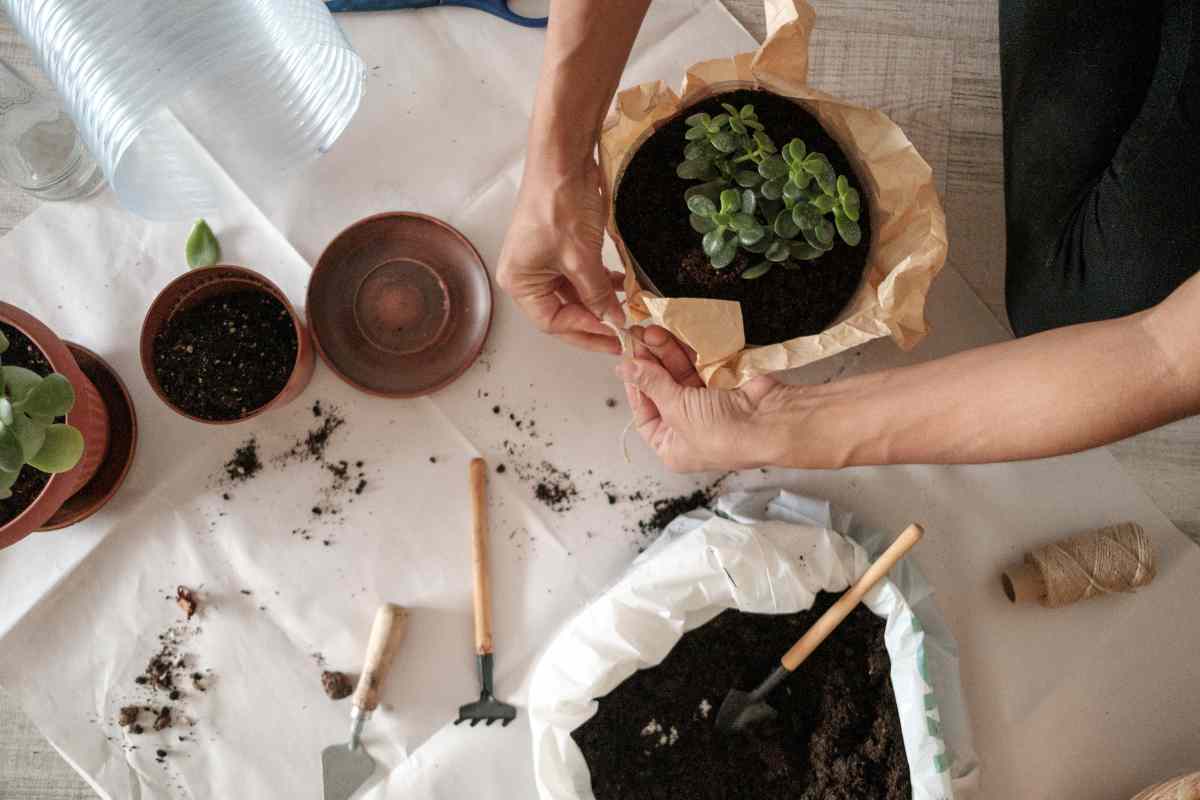Repotting A Bird Of Paradise
Are you noticing that your bird of paradise plant is not thriving as it used to? It might be time for a repotting session! Repotting your bird of paradise can do wonders for its growth and overall health. In this article, we will guide you through the process of repotting your bird of paradise in a simple and easy-to-follow manner.
First, we will help you recognize the signs that indicate your plant needs repotting.
Then, we’ll discuss the supplies you’ll need to gather before getting started.
Next, we’ll walk you through preparing the new pot and soil for your bird of paradise.
Finally, we’ll provide a step-by-step guide on how to properly repot your plant.
By following these steps, you can ensure that your bird of paradise gets the care it deserves and continues to thrive in its new home.
So let’s get started on giving your feathered friend the fresh start it needs!
Repotting A Bird Of Paradise

Signs that Your Bird of Paradise Needs Repotting
If your bird of paradise’s roots are bursting out of its pot, it’s definitely time for a repotting! Common problems with bird of paradise plants include overcrowding and root-bound conditions. When the roots have no more room to grow in their current pot, they become tangled and compacted, leading to stunted growth and nutrient deficiencies.
Repotting is crucial to promote healthy growth in these plants. To ensure optimal conditions, choose a pot that’s one size larger than the previous one and has good drainage holes. Fill it with well-draining soil mix, such as a blend of peat moss, perlite, and sand.
Gently remove the plant from its old container, loosen the roots, and place it into the new pot. Backfill around the roots with fresh soil mix and water thoroughly. Remember to provide adequate sunlight and regular watering for your newly repotted bird of paradise plant to thrive.
Gather the Necessary Supplies
To successfully transfer the plant into a new pot, you’ll need potting soil, a larger container, gardening gloves, and a watering can.
Choosing the right pot is essential for repotting your bird of paradise. Look for a container that’s slightly larger than the current one to allow room for growth. Make sure it has drainage holes at the bottom to prevent waterlogging.
When it comes to soil selection for repotting, opt for well-draining potting soil specifically designed for tropical plants like bird of paradise. Avoid heavy soils that can retain too much moisture and cause root rot. You can also add perlite or sand to improve drainage if needed.
Remember to wear gardening gloves while handling the plant and use a watering can with a narrow spout to avoid overwatering during the repotting process.
Prepare the New Pot and Soil
Before moving your plant to a larger pot, make sure the new container is prepared with suitable soil. Choose the right pot size – it should be about 2-4 inches wider in diameter than the current one. This allows enough space for the roots to spread out, preventing overcrowding and promoting healthy root development.
Using the correct potting mix is also important. Bird of paradise plants prefer well-draining soil that retains some moisture but doesn’t become waterlogged. A good potting mix can consist of equal parts peat moss, perlite, and coarse sand or orchid bark. This mixture provides adequate drainage while retaining enough moisture for optimal growth.
When repotting, gently pack the soil around the roots and water thoroughly afterward to help settle it in place.
Repotting Step-by-Step Guide
Get ready to give your plant a fresh new home and watch it thrive! Repotting a bird of paradise may seem intimidating, but with the right tips and techniques, it can be a breeze. Here is a step-by-step guide to help you successfully repot your bird of paradise:
| Step | Instructions |
|---|---|
| 1 | Choose a pot that is one size larger than the current one. Make sure it has drainage holes to prevent waterlogging. |
| 2 | Prepare the new pot by filling it with well-draining soil mix, such as a blend of potting soil, perlite, and sand. |
| 3 | Gently remove the bird of paradise from its current pot by tapping on the sides or using a knife to loosen the roots. |
| 4 | Place the plant in the center of the new pot and add more soil around it, ensuring that all roots are covered. |
| 5 | Water thoroughly after repotting and place in a well-lit area without direct sunlight. |
By following these bird of paradise repotting tips and avoiding common mistakes like using too large or small pots or overwatering, you can give your plant the best chance for healthy growth in its fresh new home.
Caring for Your Repotted Bird of Paradise
Once you’ve successfully repotted your bird of paradise, make sure to place it in a well-lit area and water it thoroughly for healthy growth. Choosing the right location for your repotted bird of paradise is crucial.
Ideally, find a spot that receives bright, indirect sunlight for most of the day. Avoid placing it in direct sunlight as this can scorch the leaves. Additionally, make sure the temperature is consistently warm, between 65-85°F (18-29°C).
When it comes to watering and fertilizing your repotted bird of paradise, remember to keep the soil evenly moist but not soggy. Water once every 7-10 days, allowing excess water to drain out from the bottom of the pot. As for fertilization, use a balanced fertilizer every two months during spring and summer. This will provide essential nutrients for robust growth and vibrant blooms.
With proper care and attention, your repotted bird of paradise will thrive in its new home and bring beauty to any space.
Conclusion
In conclusion, repotting your bird of paradise is an essential task to ensure its healthy growth. By recognizing the signs and following the step-by-step guide, you can provide a fresh environment for your plant to thrive.
Remember to gather all the necessary supplies and prepare the new pot and soil before proceeding with the repotting process. With proper care and attention, your repotted bird of paradise will continue to beautify your space for years to come.
Enjoy nurturing your green companion!





